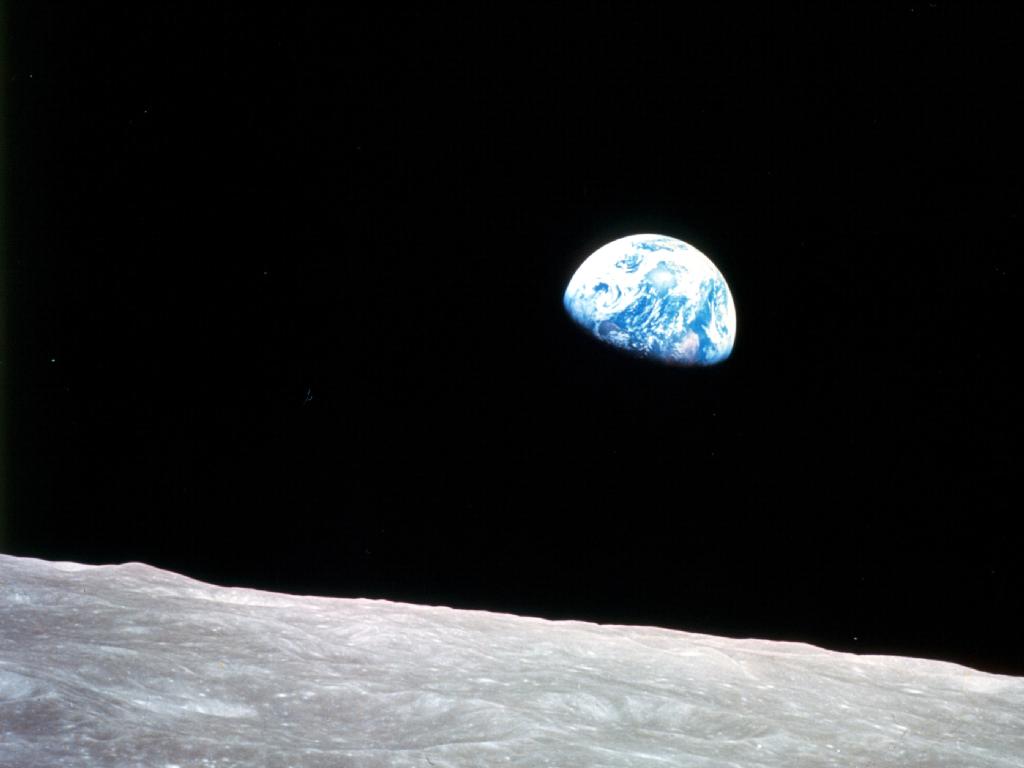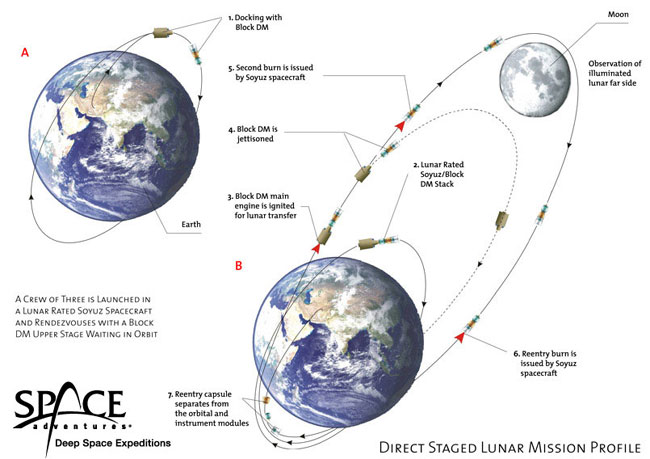Next Giant Leap for Space Tourism: A Trip Around the Moon

This story is part of a week-long series on the first decade of space tourism, which began on April 2001. Also today on SPACE.com: How space tourism is changing the face of suborbital science.
Space tourism has already reached low-Earth orbit, and now the industry is shooting for the moon.
After helping to send seven private citizens on eight trips to the International Space Station -- starting with Dennis Tito, who became the world's first space tourist on April 28, 2001 -- the Virginia-based company Space Adventures is mapping out a tourist trip around the moon.
Despite a nine-figure ticket price, the firm has already signed up a passenger for a maiden moon journey. And if it inks a second customer soon, the mission could launch within three to five years, company officials say.
"We need that second contract for the mission to go ahead," said Space Adventures president Tom Shelley. "But we're confident that we'll be able to make an announcement about that mission later this year."
A commercial moon shot
Space Adventures arranges flights for its clients aboard Russian Soyuz spacecraft, workhorse vehicles that have been plying the heavens since the 1960s. [Photos: The First Space Tourists]
Breaking space news, the latest updates on rocket launches, skywatching events and more!
On the circumlunar trip, customers will travel aboard a Soyuz around the far side of the moon and back -- a journey of seven or eight days, Shelley said. The spacecraft won't land on the lunar surface, but passengers will still get an experience that has been limited so far to a few dozen astronauts with NASA's Apollo program. [Giant Leaps: Top Milestones of Human Spaceflight]
"You're going to get to within 100 kilometers [62 miles] of the moon's surface, so you're going to get a really close-up view of the moon and that incredible Earthrise as well," Shelley told SPACE.com. "There are only 24 people who have seen that." [Gallery: Our Changing Moon]
Early into this long trek, the Soyuz will meet up in low-Earth orbit with a separately launched unmanned rocket. This booster will contain a propulsion system, helping the spacecraft get all the way to the moon.
The Soyuz may meet up with the rocket and head toward the moon immediately, or it may stop at the International Space Station before the rocket rendezvous, according to Shelley.
"Those are the two options," he said. "I can't say which one it would be at this stage. There are a number of factors that go into that decision."
Putting the money down
The moon mission will be different from Space Adventures' one-tourist-at-a-time trips to the space station. The three-seat Soyuz will carry two paying passengers to the moon, with the third seat occupied by a Russian mission commander, Shelley said.
And then there's the price. Space tourists reportedly paid between $20 million and $35 million to get to the station.
"It would be more, considerably more," Shelley said of the moon mission. The per-seat price would be "in the range of $150 million."
One customer overcame the sticker shock and signed his name on the dotted line. That deal was sealed last year, Shelley said. The moon mission could launch within five years if passenger number two signs on soon, he added.
"It's a different destination that's pushing the boundaries a little bit further, and it should be a great event when it happens," Shelley said.
You can follow SPACE.com senior writer Mike Wall on Twitter: @michaeldwall. Follow SPACE.com for the latest in space science and exploration news on Twitter @Spacedotcom and on Facebook.

Michael Wall is a Senior Space Writer with Space.com and joined the team in 2010. He primarily covers exoplanets, spaceflight and military space, but has been known to dabble in the space art beat. His book about the search for alien life, "Out There," was published on Nov. 13, 2018. Before becoming a science writer, Michael worked as a herpetologist and wildlife biologist. He has a Ph.D. in evolutionary biology from the University of Sydney, Australia, a bachelor's degree from the University of Arizona, and a graduate certificate in science writing from the University of California, Santa Cruz. To find out what his latest project is, you can follow Michael on Twitter.

